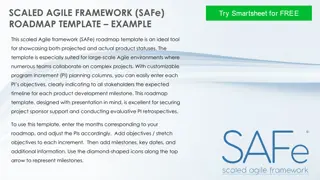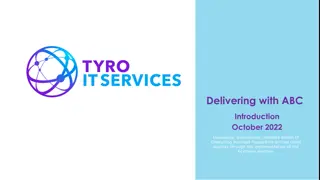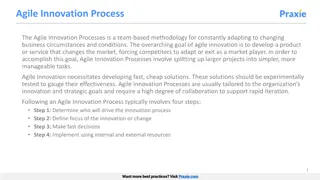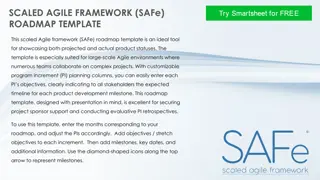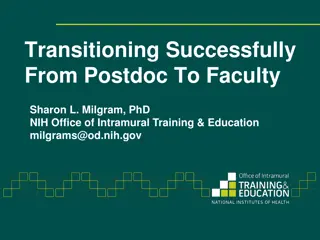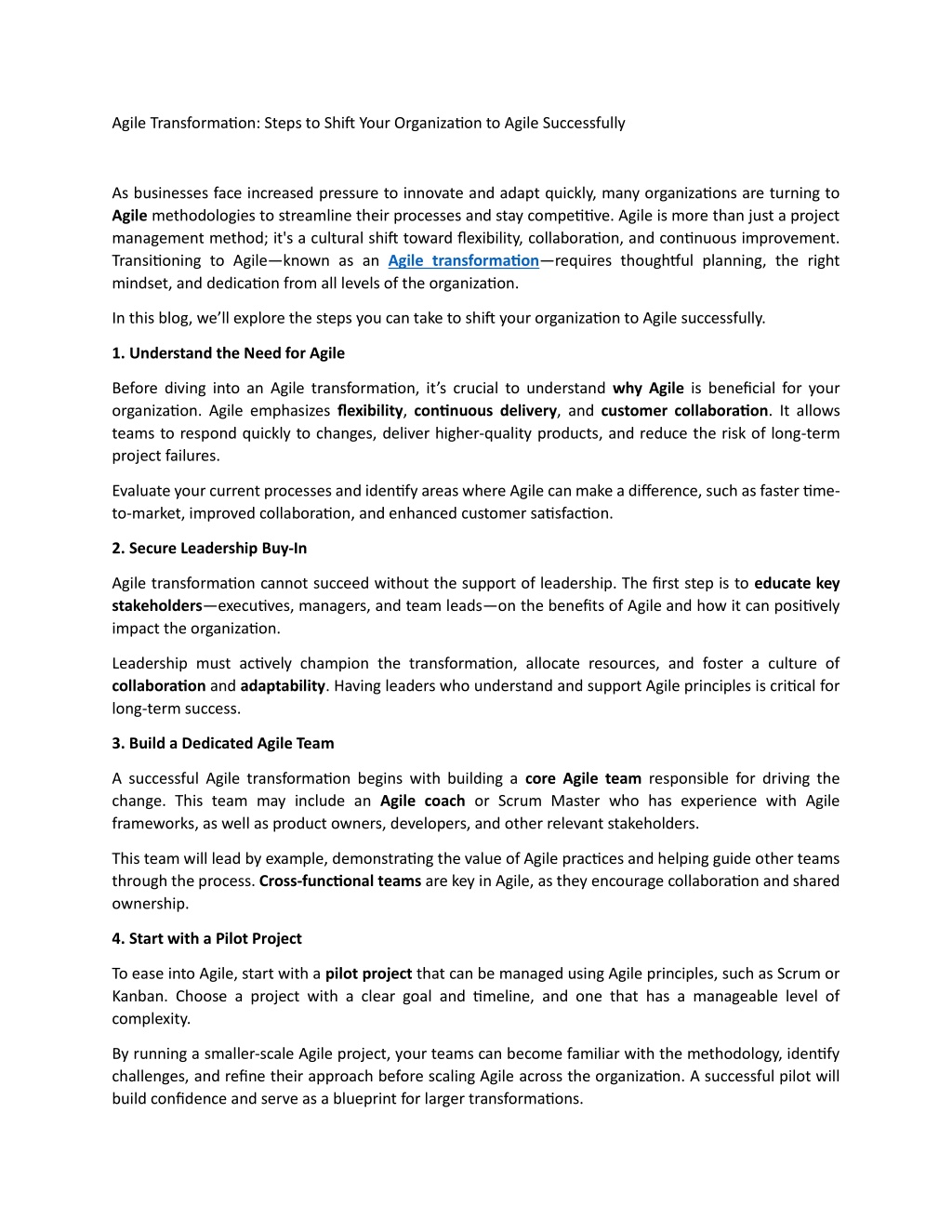
Agile Transformation Steps to Shift Your Organization to Agile Successfully
As businesses face increased pressure to innovate and adapt quickly, many organizations are turning to Agile methodologies to streamline their processes and stay competitive. Agile is more than just a project management method; it's a cultural shift
Download Presentation

Please find below an Image/Link to download the presentation.
The content on the website is provided AS IS for your information and personal use only. It may not be sold, licensed, or shared on other websites without obtaining consent from the author. Download presentation by click this link. If you encounter any issues during the download, it is possible that the publisher has removed the file from their server.
E N D
Presentation Transcript
Agile Transformation: Steps to Shift Your Organization to Agile Successfully As businesses face increased pressure to innovate and adapt quickly, many organizations are turning to Agile methodologies to streamline their processes and stay competitive. Agile is more than just a project management method; it's a cultural shift toward flexibility, collaboration, and continuous improvement. Transitioning to Agile known as an Agile transformation requires thoughtful planning, the right mindset, and dedication from all levels of the organization. In this blog, we ll explore the steps you can take to shift your organization to Agile successfully. 1. Understand the Need for Agile Before diving into an Agile transformation, it s crucial to understand why Agile is beneficial for your organization. Agile emphasizes flexibility, continuous delivery, and customer collaboration. It allows teams to respond quickly to changes, deliver higher-quality products, and reduce the risk of long-term project failures. Evaluate your current processes and identify areas where Agile can make a difference, such as faster time- to-market, improved collaboration, and enhanced customer satisfaction. 2. Secure Leadership Buy-In Agile transformation cannot succeed without the support of leadership. The first step is to educate key stakeholders executives, managers, and team leads on the benefits of Agile and how it can positively impact the organization. Leadership must actively champion the transformation, allocate resources, and foster a culture of collaboration and adaptability. Having leaders who understand and support Agile principles is critical for long-term success. 3. Build a Dedicated Agile Team A successful Agile transformation begins with building a core Agile team responsible for driving the change. This team may include an Agile coach or Scrum Master who has experience with Agile frameworks, as well as product owners, developers, and other relevant stakeholders. This team will lead by example, demonstrating the value of Agile practices and helping guide other teams through the process. Cross-functional teams are key in Agile, as they encourage collaboration and shared ownership. 4. Start with a Pilot Project To ease into Agile, start with a pilot project that can be managed using Agile principles, such as Scrum or Kanban. Choose a project with a clear goal and timeline, and one that has a manageable level of complexity. By running a smaller-scale Agile project, your teams can become familiar with the methodology, identify challenges, and refine their approach before scaling Agile across the organization. A successful pilot will build confidence and serve as a blueprint for larger transformations.
5. Implement Agile Frameworks Agile offers several frameworks that provide structure to the transformation. Two of the most popular frameworks are Scrum and Kanban: Scrum: Involves breaking down the work into short, iterative cycles known as sprints (usually 1-4 weeks). Scrum focuses on incremental delivery, daily stand-up meetings, and continuous improvement through retrospectives. Kanban: Focuses on visualizing the workflow and limiting work in progress. It s ideal for teams looking to optimize flow and manage tasks effectively without strict sprint timelines. Select the framework that best suits your organization s needs, or adopt a hybrid approach depending on your specific project and team dynamics. 6. Foster a Culture of Collaboration and Adaptation Agile transformation isn t just about changing how projects are managed; it s about shifting the organizational culture. Encourage open communication, where team members can voice concerns, share ideas, and collaborate freely. Transparency and accountability are core Agile values that must be embraced across all levels of the company. Teams should also adopt a continuous improvement mindset. Agile retrospectives, held at the end of each sprint or project, allow teams to reflect on what went well and identify areas for improvement. 7. Train Your Teams Agile transformation requires new skills, and not everyone will be familiar with Agile methodologies. Invest in training programs and workshops to educate employees on Agile principles, tools, and practices. Agile certifications, such as Certified Scrum Master (CSM) or Agile Coach, can also enhance your team's capabilities. Providing proper training ensures that everyone understands the purpose and expectations of the transformation, leading to smoother adoption and fewer roadblocks. 8. Scale Agile Across the Organization Once your initial Agile teams have found success, it s time to scale Agile across the organization. Agile scaling frameworks such as Scaled Agile Framework (SAFe) or LeSS (Large-Scale Scrum) can help you manage multiple Agile teams working together on large projects. Ensure that each team maintains Agile principles of collaboration, transparency, and customer focus, and continuously refine the process as your organization evolves. Conclusion Agile transformation is a strategic and cultural shift that can bring significant benefits to organizations looking to stay competitive in today s fast-changing environment. By securing leadership support, starting with a pilot project, fostering collaboration, and providing the necessary training, your organization can successfully transition to Agile and enjoy the benefits of faster delivery, greater flexibility, and improved customer satisfaction.
Read shift.html More: https://techhorizonsolutions.blogspot.com/2024/09/agile-transformation-steps-to-






